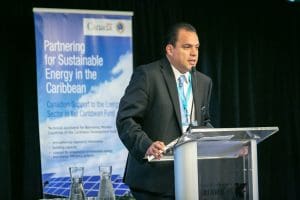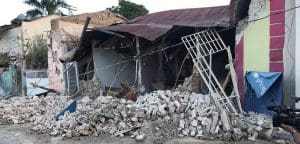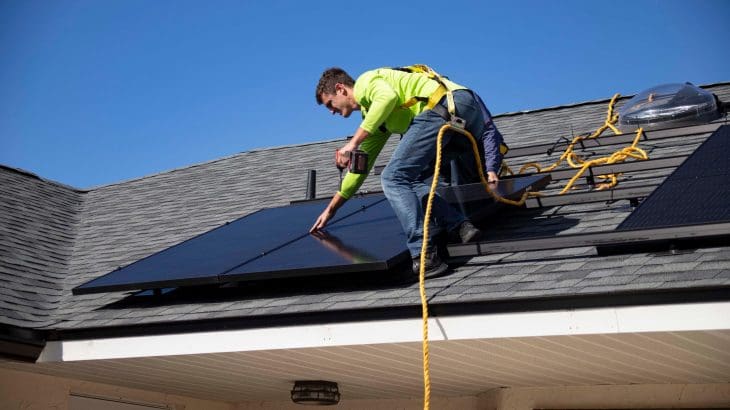At least 45 earthquakes shook Puerto Rico over several days in early January, leaving behind collapsed buildings and a crippled electric grid. As of publication, approximately two-thirds of the island’s 3.2 million customers remain in the dark. The temblors severely damaged Guayanilla Power Plant in the southern region, which generated more than a quarter of the island’s electricity, and it may be a year before the plant is back online.

Fernando Padilla, Director of the Project Management Office for PREPA
The situation is fluid and it’s unclear when power will be fully restored. Fernando Padilla, Director of the Project Management Office for the Puerto Rico Electric Power Authority (PREPA), spoke with us about the ongoing restoration effort, how the quake impacted energy infrastructure, and what this kind of event means for efforts to ensure grid resilience.
Can you give us PREPA’s take on where things stand at the moment and what you’re seeing on the ground?
When the 6.4-magnitude earthquake took place on Tuesday morning, all our power generators automatically tripped and we had an immediate blackout. We lost the Costa Sur Power Plant, which is one of our largest facilities—900 MW running on natural gas fuel oil, which is a dual unit. Right now we are operating at slightly above 1,000 MW of 2,300 MW, which is our peak demand.
The major fact here is that our transmission line and our transmission system didn’t suffer damage. We were able to connect the transmission lines from the south of Puerto Rico into the north within 24-36 hours, and we were able to energize most of the critical loads of the metropolitan area and the capital of San Juan. That means the main hospitals, the main power plant, the main aqueduct and sewage authority water treatment plants, our airport, and most of the regional hospitals across the island are online. We also have a large portion of industrial, commercial and residential customers online. Out of the power plants in the south of Puerto Rico, we only have the Aguirre Combined Cycle [592 MW oil power plant in Salinas] which is on, and we are expecting to turn on AES, Aguirre and EcoEléctrica within the next 24-72 hours. So hopefully by Sunday we should have everyone online. Based on the information we have, that’s our expectation.
The major fact here is that our transmission line and our transmission system didn’t suffer damage. We were able to connect the transmission lines from the south of Puerto Rico into the north within 24-36 hours
So you hope within 72 hours, you’re going to have the vast majority of your customers back online?
That is correct.
What about the plant in Guayanilla?
It’s severely damaged. I was there yesterday, there is severe damage to the infrastructure, to the turbines, to the structures, to the water tanks, so it’s a very dangerous site at this moment. We have our structural engineers on-site making the assessments. Right now we are not counting on the generation at that power plant in order to restore our customers.
So you have the ability to restore power to everyone on the grid using existing generation infrastructures, without the Guayanilla plant?
Correct.
PREPA’s Executive Director José Ortiz has requested that the federal government dispatch a 500 MW generator, correct?
Yes. Right now, we lost 900 MW of power, so there should be an opportunity here in partnership with the federal government to assist us on a potential solution as they did with Maria, in order to bring in generation to the island. But this is very preliminary. The main focus is to bring all of our customers online and, in parallel, work on the alternatives PREPA has in order to provide continuous and reliable power for our customers.

Earthquakes destroyed and damaged countless homes in Puerto Rico, such as this one in Guanica. (Photo: Ricardo Ortiz, Reuters)
Is PREPA in frequent contact with the federal government?
Absolutely. All of our daily briefings are with FEMA personnel and the Department of Energy. We also had FEMA leadership at the Guayanilla site yesterday. So we are in close communication with FEMA and the federal government.
Up until now, everyone has been scrambling to wrap their heads around the new RPS, the IRP, and the bondholder agreement. Does this change things?
At this moment it’s very preliminary. The main focus is restoring our customers. There’s a very dire situation in the south of Puerto Rico. It was a very catastrophic event. And it’s not only physical, there’s a social impact here we need to take care of on the PREPA side. Right now, we just have to focus all of our attention on getting our customers back online. We will have time to then think, refocus and re-shift any strategy going forward.
Given your first-hand experience, what do you think the market needs to understand about the situation?
It’s a very different strategy, it’s a very different way to recovery, than being hit by a Category 5 hurricane.
This is a new chapter for PREPA and its management: how to recover from an earthquake. It’s a very different strategy, it’s a very different way to recovery, than being hit by a Category 5 hurricane. What I’ve seen during the last few hours has been very bad damage and challenges to the generation infrastructure, and I’ve seen our transmission lines in very good condition. Contrary to when we were hit by Maria, when our generation plants were up and running, but we didn’t have power lines available. So I think these are two different situations which bring their own unique set of challenges. I’ve seen a very disciplined team that has been organized well enough that within 12 hours, we had customers and we had critical loads back online. I’ve been very proud of what I’ve seen.
Is there anything you’re not seeing from the market that you’d like to see?
At the moment, we are seeking potential solutions to offset the loss from Costa Sur. So we would welcome those solutions, of course. We want to use them through FEMA. So I think that’s going to be the major focus.
_
The long-term implications of the earthquakes on the future of grid planning and investment will be explored at the 3rd Puerto Rico Grid Revitalization Forum. Panelists will include Fernando Padilla and other PREPA representatives, along with policymakers, regulators, project developers and other high-level stakeholders.


